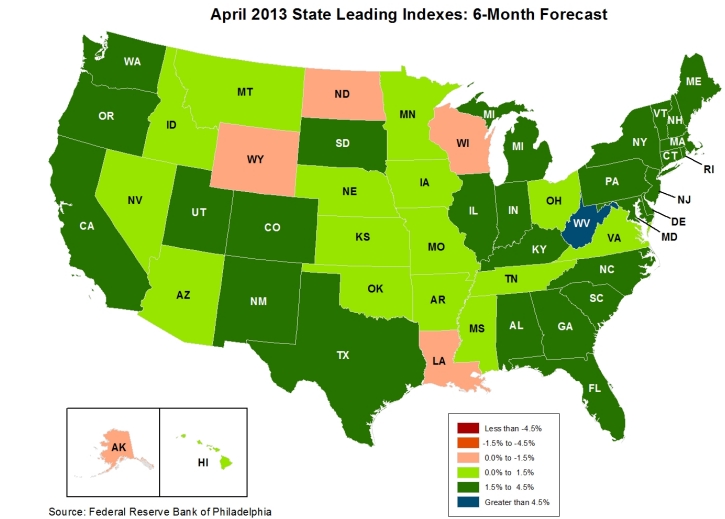Clearing off the desk of items that’ve been sitting here a week or so.
There goes the Federal Reserve again, destroying perceptions.
In its assessment of state economies released a couple of weeks ago for April 2013, only five states have contracting economies under a survey’s method. And two of them border the fair state of Minnesota — North Dakota and Wisconsin. That’s certainly not keeping with the occasional theme that businesses here are heading next door to find happiness.

It’s just one month of data, but it got some attention in Wisconsin — your 49th-ranked state, if you’re keeping score. The Milwaukee Journal Sentinel acknowledged the report is imperfect, but that doesn’t mean it’s not significant:
Among the multiple variables used to compile the leading index, a significant component is the monthly state employment report, which is prone to heavy revisions. That’s because the government bases its monthly findings on a survey of only about 3% of the state’s employers. That creates a wide margin of error when they are extrapolated statewide.
The Philadelphia Fed tries to compensate by factoring other data into its index, including average hours worked in manufacturing; the state unemployment rate; wage and salary trends; housing permits; and state initial unemployment insurance claims.
Regardless, the Leading Index is also the most recent report that suggests that Wisconsin is struggling in comparison with other states.
The most accurate reading of the state’s employment trends show Wisconsin ranks at No. 44 in private-sector job creation in the most recent 12-month period. In the same time frame, also using accurate data, Wisconsin ranks as the nation’s fifth worst in terms of the erosion in private-sector wages, in which the state’s 2.2% decline is twice the rate of the national 1.1% average.
Even in a slow recovery, Wisconsin has been on the caboose. Few if any economists appear to have pinpointed the exact reasons, which has opened the issue to political posturing over economic policy from both sides.
